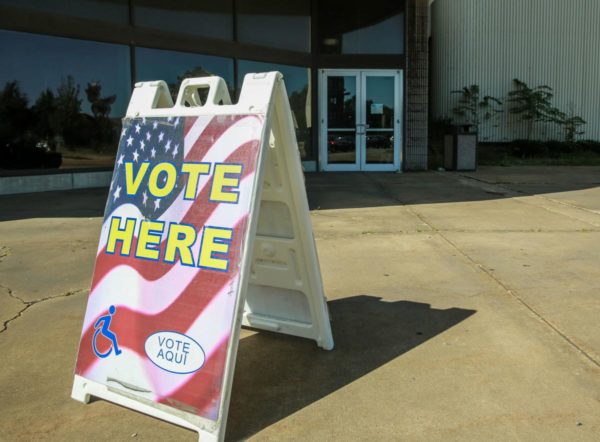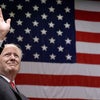MEXICO CITY—Every weekday morning at 7 o’clock sharp, President Andrés Manuel López Obrador stars in his own one-man show.
As dawn breaks over this capital city, the 65-year-old takes to a pulpit in front of the press, where he answers questions and holds forth in a folksy style about everything from the price of gas to whether drug lord Joaquín “El Chapo” Guzmán got too harsh a prison sentence.
A daily news conference is almost unheard of for any major world leader. It marks an especially radical change in Mexico, where pomp-laden presidents have long been seen as out-of-touch and inaccessible.
The event is popularly dubbed “La Mañanera,” which is Mexican slang for a morning sexual encounter. Equal parts politician, preacher and cranky old man, the silver-haired leftist usually talks for nearly 90 minutes. His answers can last for five or 10 minutes.
“He was and is a magician of communication,” said Felipe González, a former Spanish prime minister, at an event last year. “I don’t know a single political leader who can hold [even] a weekly press conference without getting burned.”
It doesn’t hurt that many of the questions are softballs—perhaps because the early hour means the journalists are half-asleep. One local TV reporter compared the president to a Kenyan long-distance runner, and asked in awed tones what the secret was to his energy and health.
Other journalists have become quasi celebrities, including a local energy reporter who sports a slim black mustache and a trademark bow tie. In the wake of a gasoline pipeline explosion that killed 137 people in January, he asked about the temperature at which “the molecule”—referring to gasoline—would ignite, so that people at filling stations might be careful.
The question went viral and quickly earned the reporter the moniker “Lord Molecule” on Twitter.
The president has also opened up the conference to YouTube and Twitter personalities—part of what he calls the “blessed social media” that helped him get elected. Some, with names like the Nopal Times, are openly pro-government. Another site, called “El Chapucero,” or “The Bungler,” has nearly a million subscribers and sells López Obrador-themed T-shirts, mugs, and socks.

“It’s less an exercise in transparency and accountability than in political communication,” says Juan Pardinas, the editor of Mexico’s respected daily Reforma, which is often attacked by the president as “posh press.”
“Ironically, he’s using a news conference to remove the media in their role as intermediaries and take his message directly to the people,” he adds.
The president’s legions of supporters welcome a chance to hear directly from a leader they trust. “It feels good to know the president is in charge so early in the morning,” says Raúl Palacios, a burly 34-year-old mechanic who says he often watches parts of the conference on YouTube during work breaks.
Many local media are wary of challenging the president because the vast majority depend on government advertising to break even, says Andrew Paxman, a historian and media expert at the CIDE research university in Aguascalientes. This year’s government budget calls for some $240 million in such advertising.
Journalists who ask tough questions often get attacked on social media by the president’s followers or heckled by supporters at the Mañanera. Mr. López Obrador has denied he is behind the intimidation, but in April he told journalists: “If you step out of line, you know what will happen. But it won’t be me, it’s the people.”
Share Your Thoughts
Would you tune into a 7 a.m. daily news conference? Join the conversation below.
According to an analysis by Spin, a local political consulting firm, the president makes on average six false statements in each news conference.
In April, Mr. López Obrador said his government had violence under control and that murders hadn’t increased in the first quarter of the year. In fact, murders increased 8% to some 8,500, the highest on record, according to figures of his own interior ministry. He said he had “other figures.”
He also boasted that formal job creation in the January-March period increased at a pace not seen in 10 years, when in fact was the lowest since 2014, according to local think tank Mexico Cómo Vamos.
Throughout, one theme is constant: The president was elected to lead the country out of a dark period of neoliberal economic policies like privatizations that protected a corrupt and conservative elite at the expense of Mexico’s good and honest people. It is a message that resonates in a country with one of the world’s highest gaps between rich and poor.

As part of his populist appeal, he cut his own salary by half, and slashed the wages of most other top officials as well. He is selling the presidential plane, a new Boeing 787-8 Dreamliner, and travels economy on commercial flights. He opened up the former presidential residence to visitors, allowing more than a million Mexicans to walk its gilded halls.
Recently, he was asked to respond to the IMF having lowered its growth estimate for Mexico’s economy to 0.9% this year from 1.6%. The president responded by blasting multilateral organizations.
“With all due respect, those organizations were the ones that imposed neoliberal economic policies that did so much damage to Mexico. I think they should apologize to the people of Mexico,” he said. He has also asked the Spanish king and Catholic Church to apologize for the Conquest.
One of the few topics that leave him tongue-tied is Mexico’s sometimes-rocky relationship with the U.S. president. When asked about Donald Trump, Mr. López Obrador often just replies, “Peace and love.”
Write to David Luhnow at david.luhnow@wsj.com and Juan Montes at juan.montes@wsj.com
Copyright ©2019 Dow Jones & Company, Inc. All Rights Reserved. 87990cbe856818d5eddac44c7b1cdeb8


